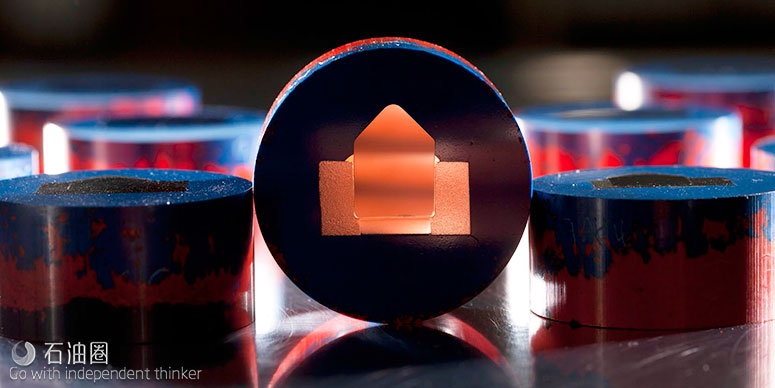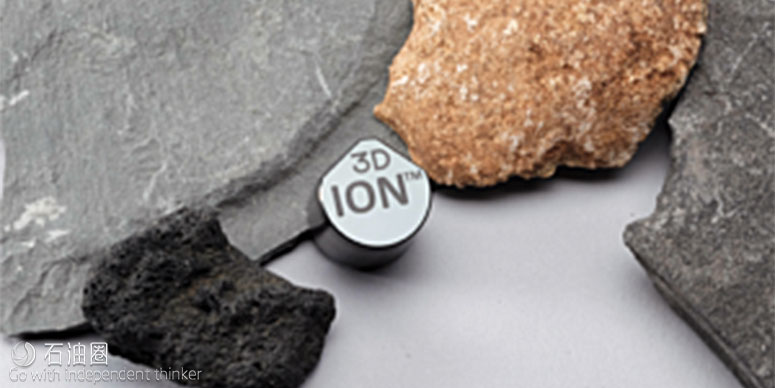Although a drill bit is but one component of a large and complex drilling system, it can have an outsized impact on the efficiency of a drilling operation. “While the amount of money spent on drill bits may be less than 1% of the total cost of the well, it can really be argued that no single component contributes more to the overall drilling performance,” said Wiley Long, Bits and Drilling Tools Product Champion at Smith Bits, a Schlumberger company.
In response to these needs from operators, service and tool companies have used advanced modeling and finite element analyses to understand the major barriers to ROP and durability, including poor cuttings evacuation, high thermal generation and vibrations. Based on these understandings, they’ve developed new cutter geometries and layouts and improved the hydraulics of the bit.
In the past, increasing ROP often would decrease durability. But in today’s drill bits, higher bit durability and ROP can go hand-in-hand, Mr Campbell said. “Historically, with drill bits, you had to balance these competing objectives,” he said. “When we tried to increase the durability of the bit, often through increased diamond volume, that would hurt the ROP.” Now, advances with cutter layout in drill bits have helped eliminate this either/or proposition, he added. Cutters are remaining sharper for longer, helping operators to maintain ROPs throughout the section being drilled.
Durable materials
It’s important to understand the factors that limit the life of a drill bit in a given formation, Tom Roberts, Director of PDC Strategy for National Oilwell Varco (NOV), said. “We’re trying to understand the failure mechanisms that we’re dealing with and then develop technologies that will reduce the chance of dulling the cutters so that we can drill much faster.” Thermal degradation and impact damage are two common modes of bit and cutter damage, so NOV designed its ION cutters to resist those two elements specifically.
The ION cutters, with a 3D geometry, were launched in mid-2017. Extensive lab testing – including thermal, abrasion, impact and toughness tests – was conducted to develop a new range of application-specific diamond grades that are less vulnerable to wear and heat damage, Mr Roberts said. The company also increased the strength of the diamonds in the ION cutters by applying more pressure to the diamond during manufacturing, making it denser and tougher.
Additionally, NOV uses a deep leaching process to selectively remove the cobalt from the diamond table. “What that means is the cutters can now take a much higher temperature when drilling through the formation,” he said. Normally, PDC bits start to break down at temperatures in excess of 700°C, he noted, but the ION cutters can tolerate temperatures up to 1,100°C.
These sorts of manufacturing improvements are enabling a revolution in cutter geometry, Mr Roberts said. “Improved technologies allow us to revisit geometries that we tried or considered in the past but wouldn’t work because the durability wasn’t there,” he said.
Among these new geometries are the ION 3D cutters, which have a pointed, rather than cylindrical, geometry. This shape creates cracks that propagate to the surface. Cylindrical cutters typically crack the subsurface, which is less efficient and generates larger cuttings. Further, “we’ve seen that for a given ROP, we would actually have a lower torque using pointed 3D cutters, which is very important to operators,” Mr Roberts said.
Minimizing torque and drag reduces wear on BHA components and avoids motor toolface fluctuation and stall for greater directional response. All of this translates to reduced wear and impact on the bit and cutters.
While the 3D cutters were originally developed with carbonate formations in mind, NOV found in lab testing that the pointed geometry worked well in every formation type to which it was applied, Mr Roberts said. The cutters have been widely deployed on bits in Alaska, Canada, the Williston Basin, the US Mid-Continent, West Texas and Oman. Overall, more than 10 million ft have been drilled using ION 3D cutters.
In early 2018, an NOV bit with ION 3D cutters was used to drill a two-mile lateral in a well in the US Mid-Continent. The bit drilled 10,028 ft in 66.31 hours, with an average ROP of 151 ft/hr. In a prior application last year in north Louisiana, an NOV bit equipped with ION cutters drilled an entire lateral section, from 11,475 ft to 17,115 ft, with a single bit. Operators had been using two and often three bits to drill that same section, Mr Roberts said. “One particular operator mentioned that they strived for 1,000 ft per day, but that didn’t often happen. We set a 24-hour record for them of 1,592 ft.”
NOV is currently field-testing an ION 4D cutter. In addition to the point-loading effect provided by the ION 3D, the 4D shape will create plowing and shearing effects to the formation. In the Williston Basin, the ION 4D was recently field-tested in a well on the same pad where the 3D version had previously been used. The 4D increased the ROP from an average of 139 ft/hr to an average of 160 ft/hr, Mr Roberts said. Field testing for the 4D cutter is expected to continue through at least the first half of this year.

 石油圈
石油圈

